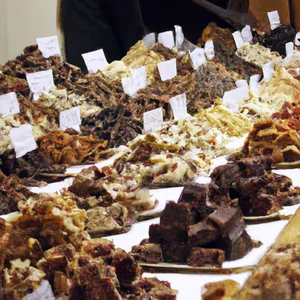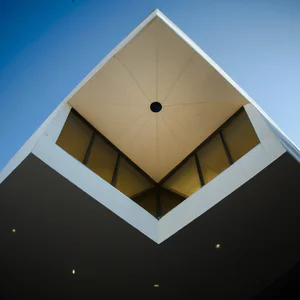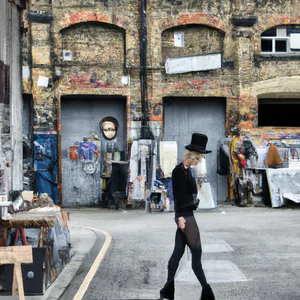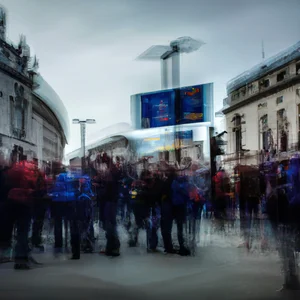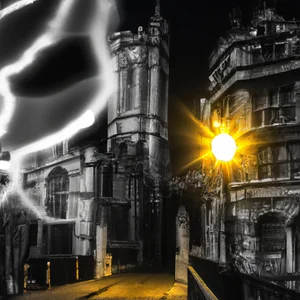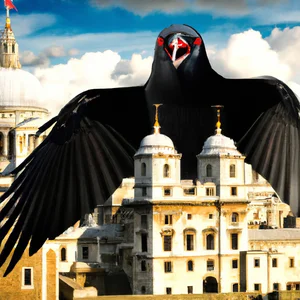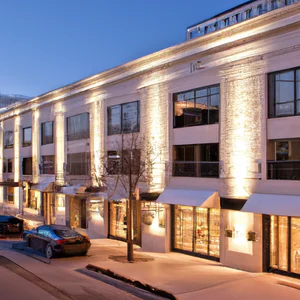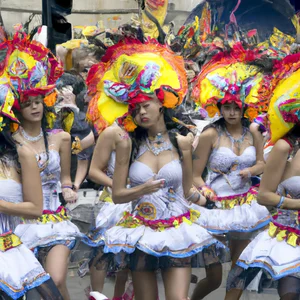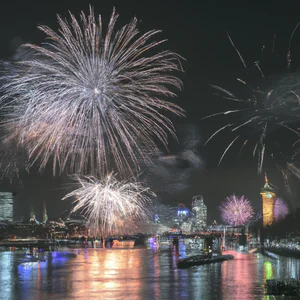Book your experience
Houses of Parliament: Architectural tour of the political heart of the United Kingdom
So, let’s talk about the Houses of Parliament, which are, in short, the beating heart of British politics. If you’ve never been there, I recommend you take a trip, because it’s like taking a dive into history, you know? It’s a place where the past and present are intertwined, and it makes you feel a bit like you’re walking through the pages of a history book.
Let’s take a step back: the first time I went, I was a bit skeptical, to be honest. I thought it was just another one of those tourist attractions that makes you pay an arm and a leg to see old stuff. But, oh boy, have I changed my mind! The architecture is crazy, with those details that leave you speechless. The spiers, the statues… it’s as if every stone has a story to tell. And then there is Big Ben, which is practically the grandfather of all bell towers, always there to mark the time like a wise old man.
During the tour, the guide told us a lot of anecdotes. Like, did you know that during World War II, the palace was bombed and yet it remained standing? It’s like he has superhero stamina, really! And as I listened, I couldn’t help but think about how incredible it was that such a symbolic place had seen so many historic events, from important laws to heated debates.
And let’s not talk about the throne, which is truly impressive. You feel a bit like a king or queen when you get close, although let’s face it, I would never sit in it for fear of breaking something!
In short, visiting the Houses of Parliament is a bit like opening a window onto a world where decisions are made, and where history is written day after day. I think, in the end, it’s an experience absolutely worth having, even just for the thrill of being in a place so full of meaning. If you have the opportunity, don’t miss it!
Discover the story behind Big Ben
An unforgettable experience
When I first set foot near the Palace of Westminster, the deep sound of Big Ben resonated in the air, enveloping my experience in an almost magical atmosphere. I remember looking up at the clock tower, struck by its majestic presence and the rich history it holds. It’s not just a watch; it is an iconic symbol of the United Kingdom, a silent witness to historical events and political changes that have shaped the world.
The story of Big Ben
Built between 1843 and 1859, Big Ben is the nickname for the great bell, but also commonly refers to the tower itself, officially called the Elizabeth Tower. The bell weighs an impressive 13.5 tonnes and its ringing has become an integral part of London life. The tower, with its neo-Gothic style, is 96 meters high and features attention-grabbing architectural details, such as the four clock dials, which shine in daylight and illuminate at night.
A little-known tip
A secret that few people know is that, to make the sound of Big Ben more audible, a system of counterweights was designed to help regulate the chiming. Furthermore, during New Year’s Eve celebrations, Big Ben is often accompanied by an incredible fireworks display, creating a festive atmosphere that attracts visitors from all over the world. If you are lucky, you can witness this magical event!
Cultural impact and sustainable practices
Big Ben is not only a symbol of London, but also an emblem of British resilience. Its constant presence has gone through wars, crises and social changes, keeping the tradition of Parliament alive. Today, there is a growing commitment to sustainable tourism practices, with initiatives encouraging visitors to use eco-friendly transportation and respect their surroundings.
Immerse yourself in the atmosphere
Imagine walking along the River Thames at sunset, with the reflection of the tower standing out on the water, while the sound of Big Ben accompanies you. It is an experience that touches the heart and remains etched in the memory. You can also join a guided tour of the Parliament, where you will have the opportunity to discover the history and architecture surrounding this iconic place.
Myths to dispel
A common misconception is that Big Ben is the name of the clock itself; in reality, it’s just the main bell. This mistake is understandable, but it underlines the importance of knowing the history and culture recalled by this monument.
A final reflection
As you gazed at the magnificence of Big Ben, did you ever wonder what story it could tell if it could talk? Each chime is a reminder to reflect on the past, on the events that have shaped our society. Whether you are a history lover or a curious traveller, Big Ben is a symbol that invites you to further explore the political heart of the United Kingdom.
Neo-Gothic architecture: a design masterpiece
When I first set foot in Westminster, my gaze was immediately drawn to the majestic silhouette of Big Ben, soaring above the Palace of Westminster. Its neo-Gothic architecture is not only an iconic symbol of London, but a true tale of design and engineering. As I walked along the Thames, the melodious sound of bells rang through the air, a call that inspired me to discover more about the history of this extraordinary monument.
A journey into neo-Gothic
Built between 1843 and 1859, Big Ben, officially called the Elizabeth Tower, is designed in the Gothic Revival style, an artistic movement that aimed to evoke grandiose medieval cathedrals. The tower is adorned with intricate details, including gargoyles and pointed arches, reflecting unparalleled craftsmanship. Every brick, every ornament tells a part of London’s history, making this masterpiece not only an architectural but also a cultural landmark.
Practical information
If you want to see Big Ben up close, a visit to its base is now possible thanks to guided tours offered by the Parliament, but it is advisable to book in advance. Visits are available Monday to Friday and can be arranged through the official UK Parliament website. Remember that access restrictions may vary depending on current events, so always check for updates.
An insider tip
Here’s a little-known tip: If you want to capture the beauty of Big Ben without the crowds, head to Westminster Bridge at sunset. Not only will you have a breathtaking view of the illuminated tower, but you will also be able to enjoy the peaceful atmosphere that surrounds the river. It’s the perfect time to take stunning photos and savor the essence of London.
The cultural impact of Big Ben
Big Ben is not just a clock, but a symbol of resilience and unity for the British people. During times of crisis, such as the Second World War, the ringing of its bells represented a beacon of hope. Its presence continues to inspire artists, writers and filmmakers, making it a staple of British culture.
Sustainability in architecture
In recent years, there have been efforts to promote sustainable tourism practices around Big Ben. Initiatives such as improving pedestrian areas and promoting eco-friendly public transport are helping to preserve this heritage for future generations. Raising awareness of the importance of visiting responsibly is a vital step in the conservation of this iconic monument.
Soak up the atmosphere
As you gaze up at Big Ben, take a moment to close your eyes and listen to the sound of the bells wafting through the air. Imagine the story behind every shot, the beat of a heart that has marked time for over 160 years. This isn’t just a piece of architecture; it is a story of a city that has seen the passage of time and the transformations of the world.
An activity worth trying
For an even more immersive experience, I recommend taking a night tour of the Parliament. Here you can explore the historic interiors as the city lights up. You will discover hidden corners and fascinating stories that you won’t find in tourist guides.
Myths to dispel
A common misconception concerns the name “Big Ben”, often attributed to the tower itself. In fact, Big Ben is the nickname of the large bell inside the tower. This detail reflects how important it is to know the history to fully appreciate the places we visit.
Final reflection
As you walk away from Big Ben, ask yourself: what role has this symbol played in your perception of London? The next time you hear the ringing of its bells, remember that it is much more than just a clock; it is a witness to history and culture that continues to live and tell stories to those who are willing to listen.
Guided tour: Parliament secrets revealed
A personal experience
On my first trip to London, I remember taking a guided tour of the Palace of Westminster. As we walked through the sumptuous rooms, the guide, a former parliamentarian, shared anecdotes that almost seemed like something out of a novel. Between one room and another, he told us about a famous debate in which a single word changed the course of British history. This made me understand that Parliament is not just a workplace, but a stage where the stories of a nation intertwine.
Practical information
Currently, guided tours of the Parliament take place every day, with visits scheduled every half hour. It is advisable to book in advance, especially during high season, to guarantee your place. You can check the official Parliament website for updated information and fees. Tours last approximately an hour and a half and include access to iconic sights such as the House of Commons and the House of Lords.
An insider tip
A trick that only locals know is to take a tour during the week, when Parliament is in session. This offers the opportunity to see politicians in action, an experience that greatly enriches the visit. Furthermore, if you are lucky enough to be there during an important vote, you may also hear the echo of enthusiastic chants or protests, making the atmosphere even more vibrant.
Cultural and historical impact
The Palace of Westminster is not only a center of political power, but is also a symbol of British democracy. Every corner of the Palace tells stories of conflicts, successes and social transformations. His role in the history of the United Kingdom is invaluable, having witnessed events that shaped not only the nation, but also the entire world.
Sustainability and responsible tourism
In the context of sustainable tourism, Parliament has recently introduced eco-friendly practices into its tours. For example, the use of digital audio guides reduces paper consumption and tour groups are limited to ensure a more intimate and environmentally friendly experience.
Immersiveness and vivid description
Imagine walking through the elegant Hall of the House of Commons, with its green and gold tones reflecting the natural light streaming in from the enormous windows. The walls are decorated with historic tapestries that tell the story of the nation’s rich history. Every step seems to echo the words of politicians who, over the centuries, have influenced the destiny of the country.
An activity worth trying
If you want an even more immersive experience, consider attending a political discussion workshop that is often held in conjunction with the tours. Here, participants can simulate a parliamentary debate, a unique opportunity to better understand the mechanisms that regulate British politics.
Myths and misconceptions
A common misconception is that Parliament is an inaccessible place, reserved only for politicians and officials. In fact, it is open to anyone who wishes to learn more about the British democratic system. Additionally, many mistakenly believe that touring is boring; indeed, the stories and curiosities shared make each visit lively and engaging.
Final reflection
After exploring the Palace and listening to the stories of the politicians who worked there, I asked myself: What impact do our daily actions have on democracy? Every visit to Parliament is not only a journey into the past, but also an invitation to reflect on the present and future of our society. What do you think? Are you ready to discover the secrets of this extraordinary place?
Voices from the past: stories of famous politicians
An echo of forgotten stories
I remember the moment I walked through the doors of the Palace of Westminster for the first time. The thrill of being inside one of the most iconic places in British politics was palpable. As I walked along the corridors adorned with works of art, I heard a whisper, almost an echo of the voices that once animated those rooms. Every corner seemed to tell stories of famous politicians, men and women who had shaped the destiny of the United Kingdom.
Politicians who made history
The British Parliament is a melting pot of compelling stories. Figures like Winston Churchill, Margaret Thatcher and Clement Attlee are not just names in a history book; their choices and speeches still resonate today. The crucial decisions taken in the halls of Parliament had repercussions that are still felt in the contemporary world. For example, Churchill’s famous speech of 4 June 1940, in which he urged the nation to fight against Nazism, is still studied and cited as a symbol of resilience.
An insider tip
If you want to fully immerse yourself in these stories, I recommend taking a guided tour of the Palace of Westminster, where you can hear exclusive anecdotes about famous politicians. Few people know that during heated debates, some politicians even threw objects at each other! This often forgotten little secret adds a touch of humanity and liveliness to the already fascinating political narrative.
The cultural impact
The history of the political figures who have passed through Parliament is not just a matter of news; it has profoundly influenced British and world culture. The ideas and ideologies of these politicians have fueled debates on democracy, freedom and social justice. Their legacy continues to inspire new generations of leaders and active citizens.
Responsible tourism
In an era where sustainable tourism is more important than ever, it is essential to approach these historic places with respect. Taking tours that support local initiatives and promote historical awareness is a great way to contribute to responsible visiting. Discovering stories of famous politicians is not only a journey into the past, but also an opportunity to reflect on how the present is shaped by such legacies.
An experience not to be missed
For a truly unique experience, I recommend booking a visit to Parliament during a debate session. Watching politicians in action as they debate crucial issues offers a privileged glimpse into how British democracy works on a day-to-day basis. Don’t forget to bring a camera to capture the vibrant atmosphere!
Myths to dispel
A common misconception is that Parliament is only accessible to those with a deep interest in politics. In reality, the Palace of Westminster welcomes visitors of all backgrounds and interests, making political history accessible to all. You don’t need to be an expert to appreciate the stories and experiences this place has to offer.
Final reflection
As you walk away from the Palace of Westminster, ask yourself: What story will you leave in the world? Recognizing the weight of the stories around us can help us better understand our place in history and the impact of our actions. The voices of the past continue to guide us, and their echoes are an invitation to write our own chapter.
Local experience: historic cafes nearby
A journey through time through taste
The first time I set foot in one of the historic cafés near Big Ben, the enveloping scent of freshly roasted coffee and fresh pastries transported me back in time. Sitting at a wooden table in a corner of Café Royal, I sipped an espresso while the voices of tourists and locals mixed in a fascinating background. Here, every sip of coffee tells a story, and every treat can bring to life crucial moments in British history.
Practical information on historic cafés
Among the historic cafés that are worth a visit, The Ivy and Café Royal are two musts. The Ivy, founded in 1917, is known for its elegant setting and the celebrity guests who have frequented it, from Charles Dickens to Judy Garland. Café Royal, on the other hand, is a true monument of London’s Belle Époque, with its fascinating architecture and tradition of serving afternoon tea. For more details, you can consult the official website Café Royal or The Ivy.
An insider tip
A little-known tip is to order tea time at less crowded times, typically around 3pm. This way, you can enjoy a more intimate experience and have more opportunities to chat with the staff, who are often very passionate about the history of the place and will be happy to share fascinating anecdotes.
The cultural impact of these cafes
Historic cafés are not just places to enjoy a drink; they are real cultural centers where lives, ideas and stories intertwine. Places such as The Ivy hosted literary gatherings and political discussions, becoming an integral part of London social life. Here, the past merges with the present, and visitors can hear the echoes of conversations that have shaped British culture.
Sustainability and responsible practices
Many of these historic cafes are adopting sustainability practices to reduce their environmental impact. For example, Café Royal uses organic and local ingredients, contributing to a more sustainable supply chain. Choosing to eat in these places not only supports local culture but also promotes responsible tourism.
An atmosphere to fall in love with
Imagine sitting outside The Ivy, as the sun sets behind Big Ben, creating a magical atmosphere. The city lights begin to shine, and the ringing of bells mixes with the buzz of conversations. It is a moment to live, a perfect combination of history and modernity.
An activity worth trying
I recommend you attend an afternoon tea in one of these historic cafés. Not only will you have the opportunity to savor local delicacies, but you will also be able to experience a cultural ritual that is part of British tradition.
Myths and misconceptions
A common misconception is that these cafes are only for tourists. In fact, many locals frequent these places regularly, making the atmosphere lively and authentic. Don’t be intimidated by elegance; everyone is welcome.
Final reflection
While you sip a good coffee, I invite you to reflect on how these historic places continue to influence everyday life in London. What story will you take with you after living this experience? The city is full of stories waiting to be discovered, and the historic cafés are just the beginning.
Sustainability and the future of touring in London
A Personal Experience
I vividly remember my first tour of London, immersed in the frenzy of a city pulsating with history and modernity. As I admired the magnificent Big Ben, my attention shifted to a small group of tourists animatedly discussing how tourism could impact the environment. It was at that moment that I began to understand the importance of sustainability in tourism, a topic that is more relevant today than ever.
Practical and Updated Information
London, like many other large cities, is facing sustainability challenges. According to a 2022 London Assembly report, tourism accounts for a significant portion of the city’s carbon emissions. For this reason, many tourist agencies have started to offer sustainable tours, using eco-friendly means of transport such as bicycles and public transport. An example is the “Eco London” tour, which combines visits to points of interest with responsible tourism practices.
Insider advice
Here’s a little-known trick: instead of buying a ticket for a traditional tour, consider joining one of the free walking tours organized by local guides. Not only will you have the opportunity to explore the city on foot, but you will also be able to contribute to a more sustainable tourism model. Many of these tours encourage tipping for guides, allowing them to earn an ethical living.
The Cultural and Historical Impact
Sustainability in tourism is not just an ecological issue; it is also a question of cultural respect. With a growing awareness of the impact of tourism on local communities, travelers are now more inclined to seek out authentic experiences that enhance and preserve British traditions. Sustainable tourism programs promote a deeper connection with local culture, encouraging visitors to interact with residents and support small businesses.
London atmosphere
Imagine walking along the Thames, with the sun setting behind the Houses of Parliament, breathing in the fresh, clean air. The streets of London, historically crowded with tourists, are now bustling with a constant flow of residents using sustainable means of transport. This new way of traveling not only reduces environmental impact, but also enriches each visitor’s personal experience.
Activities to Try
For an unforgettable experience, join a cooking workshop using local, sustainable ingredients. In this way, not only will you be able to taste traditional British dishes, but you will also have the opportunity to learn from local producers and better understand the importance of sustainability in gastronomy.
Myths to dispel
A common misconception is that sustainable tourism is expensive or limited. In fact, there are countless affordable options that offer unique experiences without compromising your budget. The key is to consciously seek out and choose operators who value sustainability.
A Final Reflection
As the world evolves, so must the way we travel. Have you ever wondered how the way you travel can affect the destination you visit? Next time you explore London, consider how your choices can help preserve the beauty of this historic city for future generations.
A hidden corner: Westminster Hall
A personal experience
I remember the first time I walked through the doors of Westminster Hall. As I approached, the grandeur of the building struck me like a bolt from the blue. It was a Saturday morning, and the noise of the city seemed distant, almost unreal. I entered, and it was like stepping back in time. The wooden beams, dark and massive, told stories of past centuries. It was here that historical processes had taken place, and the feeling of being part of that past enveloped me.
Practical information
Westminster Hall is the oldest part of the British Parliament, built in 1097. Today it is open to the public, with free access. To visit this stunning example of medieval architecture, you can join one of the guided tours of the Parliament, available almost every day. I advise you to check the official Parliament website for opening hours and any closures. Don’t forget to arrive a little early to explore the surrounding courtyard, a place of peace in the heart of London’s bustle.
Unconventional advice
Here’s a tip that few know: try to visit Westminster Hall during less crowded hours, such as early afternoon. You will have the chance to admire the architectural details without being disturbed by the crowds and you can even find a quiet corner to reflect on the history that surrounds you.
Cultural and historical impact
Westminster Hall is not just an architectural monument; it is a symbol of British democracy and its history. Significant events took place here, such as the funeral of Sir Winston Churchill and the trial of King Charles I. This space has seen some of the most crucial moments in the history of the United Kingdom, making it a place of great cultural importance.
Sustainable tourism practices
When visiting Westminster Hall, consider using public transport to reduce the environmental impact of your trip. Westminster tube station is a short walk away, offering easy access to many other city attractions. Choosing to walk or cycle to explore central London is a great way to experience the city in a more sustainable way.
Immerse yourself in the atmosphere
As you walk among the stone columns and gaze at the stained glass windows, imagine the heated discussions that took place here. The reverent silence that reigns within Westminster Hall almost seems to whisper the stories of those who have walked these same stones, creating an atmosphere that is both majestic and intimate.
Suggested activity
For a truly unique experience, join one of the occasionally held ‘Open House’ sessions, where you can explore hidden corners and listen to fascinating stories from expert guides. Keep an eye on the calendar of events on the official website so you don’t miss this opportunity.
Addressing the myths
A common misconception is that Westminster Hall is only a tourist attraction to be seen briefly. In fact, it is a place that invites contemplation, where you can truly feel the historical legacy of the United Kingdom. Take the time to reflect on what this space represents.
Final reflection
Every time we visit a place as steeped in history as Westminster Hall, we are given the opportunity to reconsider our place in the world. What stories could these walls tell if they could talk? We invite you to reflect on this as you explore the wonders of London.
Special events: Attend a parliamentary session
Imagine finding yourself in the beating heart of British democracy, surrounded by an atmosphere of tension and expectation. It’s voting day and the air is charged with electricity. The first time I attended a parliamentary session, I remember the thrill of seeing Members of Parliament (MPs) enter the chamber, ready to give voice to opinions and passions that impact millions of lives. The majesty of the Houses of Parliament is the backdrop to this dramatic political theatre, an experience that goes far beyond simple observation.
Practical information
Attending a parliamentary session is an activity accessible to anyone, but it helps to plan ahead. The sessions are open to the public, but it is advisable to book tickets on the official website of the British Parliament. Visits can range from simple access to the spectators’ gallery during general discussions, to special tours to attend particular events such as Prime Minister’s Questions (PMQs), which are held every Wednesday. For up-to-date information, visit Parliament.uk, where you will find details of upcoming sessions and how to access.
A secret tip
A little-known tip: if you want a truly unique experience, try attending a parliamentary session on a day of debate on a controversial topic. The emotions are palpable and you will have the opportunity to see Parliament in action, with heated discussions and moments of fervent political passion. Also, don’t forget to arrive a little early to enjoy a coffee in the nearby Parliament Café, where you can exchange opinions with other visitors about what you’re about to observe.
Cultural and historical impact
Parliamentary sessions are not just political events; they are an integral part of British history and culture. Every vote, every discussion, and every controversy that takes place within these walls helps shape the nation’s future. Public participation is a fundamental right, and witnessing this process is a way to connect with the history and culture of the United Kingdom.
Sustainability and responsibility
Participating in parliamentary events also represents an opportunity to practice responsible tourism. Make sure you follow Parliament’s guidelines on civic behavior and compliance with the law. Furthermore, considering using public transport to reach Parliament is one way to reduce the environmental impact of your visit.
Immerse yourself in the atmosphere
As you sit in the gallery, notice the Gothic architecture that surrounds you. The light filters through the stained glass windows, creating an almost magical atmosphere. The speeches resonate between the historical walls, and every word uttered is a step towards the construction of a collective future.
An activity worth trying
After attending a parliamentary session, take time to explore Victoria Tower Gardens, located right next to the Houses of Parliament. This park offers an enchanting view of the Palace, an ideal place to reflect on the experience you have just had.
Myths and misconceptions
A common misconception is that attending a parliamentary session is reserved only for political experts. In reality, anyone can attend and, in fact, is encouraged to do so. It’s an opportunity to better understand how the British political system works and to feel part of the democratic process.
Final reflection
After having lived this experience, we invite you to reflect: how important is it for you to be involved in the decision-making process of your country? Attending a parliamentary session could be the first step towards greater civic awareness. What stories and decisions influence your daily life?
Art and culture: the works inside the Palace
An artistic soul at the heart of British power
I still remember my first visit to the English Parliament, when, as I walked along the crowded corridors, I stopped in front of an impressive work of art, a fresco depicting crucial moments in British history. The majesty of those images struck me, and I felt as if I were part of an epic tale, an intruder into a world of art and culture that mixed with politics. It’s incredible how, within such a formal institution, you can breathe such a rich atmosphere vibrant.
The Houses of Parliament is not only a center of political decisions, but also a living museum celebrating British art and culture. The works inside, from the majestic tapestries to the commemorative statues, tell stories of national heroes and significant historical moments. I advise you to pay particular attention to the paintings that adorn the Central Lobby, where every detail is a reference to the tradition and identity of the country.
Discover hidden gems
If you want an authentic experience, take advantage of guided tours which often include access to lesser-known rooms and galleries. Many visitors are unaware that in addition to the famous public spaces, there are corners reserved for special guests, where extraordinary works of art await to be discovered. For example, the Robing Room, used by the Queen to prepare before an opening of Parliament, is decorated with frescoes that deserve to be observed carefully.
An insider tip
Unconventional advice? If you have time, visit the Parliament during the opening week of the temporary exhibitions. Often, during this period, you can attend exclusive events that showcase contemporary artists and works of art that dialogue with the history of the Palace. It’s not only an opportunity to see art, but also to interact with artists and understand their vision.
The cultural impact
The art within Parliament House is a testament to British social and political history. Each work is not just an aesthetic object, but a symbol of values and ideals that have shaped the nation. This connection between art and politics is what makes Parliament House such a special and fascinating place.
Sustainability and responsibility
In an age where sustainability is key, Parliament is taking steps to promote responsible practices. Some artworks are created using recycled materials or sustainable techniques, reflecting a commitment to the future and the environment. This is an aspect often overlooked by tourists, but it deserves attention.
An experience you won’t forget
I invite you to take part in a guided tour and be inspired by the beauty and culture of the Parliament Building. Not only will you explore a place of great historical importance, but you will also have the opportunity to reflect on the interaction between art and politics.
Final reflection
Have you ever thought about how art shapes the way we see the world? Every painting and sculpture within Parliament has the power to evoke emotion and stimulate thought. Next time you visit a place of power, ask yourself: What stories and meanings lie behind the works of art around you?
Top Tip: Visit at dusk for the magic
An unforgettable moment
I still remember the first time I was lucky enough to walk along the Thames at dusk. The sky was tinged with shades of purple and orange, as Big Ben stood majestically against the skyline. The scene was almost surreal, with the lighting reflecting off the water, creating an atmosphere of intimacy and mystery. It was at that moment that I realized how magical it can be to visit London after dark.
Practical information
To enjoy this enchanting experience, I recommend arriving around 6pm, when the sun starts to set. The best season for this visit is between spring and autumn, when the days are longer. Don’t forget to check sunset times, which you can find on sites like Time and Date. A great location to view Big Ben is Westminster Bridge, where you can capture the beauty of the Houses of Parliament and the London Eye in the background.
An insider tip
If you want to make your visit even more special, bring along a blanket and a picnic. Many Londoners take advantage of the surrounding parks, such as St. James’s Park, to relax while the sun sets. It’s a unique way to savor the local culture, enjoying a moment of tranquility in a busy city.
Cultural and historical impact
Big Ben, iconic symbol of London, is not just a clock; represents a piece of British history. Built in 1859, it has witnessed historic events, celebrations and moments of crisis. His presence is a beacon of resilience and unity, a symbol that continues to inspire generations. The view at dusk amplifies this meaning, blending architectural beauty with the richness of history.
Sustainability and responsibility
When planning your visit, consider the environmental impact. Choose to walk or use public transport to reduce your ecological footprint. London offers a well-developed public transport network, and a journey on the tram or tube can be a fascinating experience in its own right.
A dream atmosphere
Imagine walking along the river, with the sound of the water and the city lights gradually turning on. The scent of food sold from nearby kiosks mixes with the fresh evening air, while the laughter and chatter of passers-by create a background of vibrant life. This is the moment when London reveals its most fascinating side, far from the frenzy of the day.
Activities to try
After admiring Big Ben at sunset, why not treat yourself to a cruise on the Thames? Several companies, such as City Cruises, offer evening tours that will allow you to enjoy a unique view of the illuminated city. It’s an unmissable opportunity to see iconic landmarks such as Tower Bridge and the Tate Modern in a romantic atmosphere.
Myths to dispel
A common misconception is that Big Ben is the name of the tower. In reality, the term refers to the bell inside the tower. The tower itself has been known as the Elizabeth Tower since 2012. Discovering this detail can make your visit even more interesting, adding a dimension of knowledge and curiosity.
A final reflection
Next time you visit London, take a moment to reflect on how twilight can transform your experience. Have you ever thought about how daylight can change the perception of a place? Ask yourself: what other hidden gems could you discover simply by changing the time of your visit?

 Architecture and Design
Architecture and Design Cities and Regions
Cities and Regions Culture and History
Culture and History Events and Festivals
Events and Festivals Fashion and Shopping
Fashion and Shopping Food and Wine
Food and Wine Nature and Adventure
Nature and Adventure Unique Experiences
Unique Experiences


















